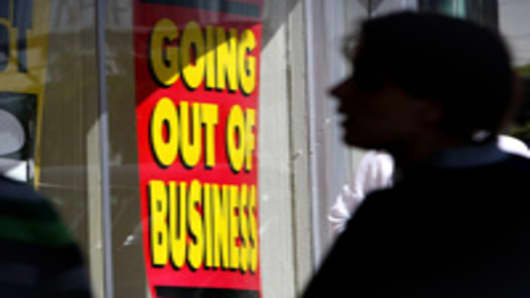What went wrong: The collapse of the construction industry. Revenue fell to an annualized rate of $50 million in the last quarter of 2008. Soon after, Bank of America — which had taken over the Chicago-based regional bank that held Knight-Celotex’s loans — declared the company in technical default because its debt exceeded the percentage of cash flow established in its contract. The company was sold in pieces in bankruptcy.
Looking back: “One of the key things to be aware of is who your partners are and choose them wisely,” Mr. Knight, 55, said “Although all money’s green, it’s not all the same. It can come at a terrible cost.”
•
Business:Rococo, a women’s fashion boutique in Houston. Opened: August 2008. Closed: November.
At its peak: Just four months after its opening, the 1,200-square-foot shop in River Oaks — Houston’s Beverly Hills — was pulling in $40,000 a month in revenue. In early 2009 Houston magazine called it a top store for style.
What went wrong: The owner, Jennifer Watson, 39, says sales started to spiral downward in March. “I went from $1,000 to $3,000 every day to five days in a row with zero sales,” she said. Besides the weak economy, she blames the mall owner’s decision to raze a local historical building in an expansion: “People called River Oaks Shopping Center the most hated mall in Houston.”
Looking back: Currently working as a personal assistant to a local cardiologist, Ms. Watson said she wished she’d rented from a small non-commercial landlord who might have been more flexible when times got tough.
•
Business:Yarbrough’s Family Restaurant, a Shawnee, Kan., eating place. Opened: 1966. Closed: December.
At its peak: In its first 10 years, Yarbrough’s was the only restaurant in Johnson County. Just down the street from the town’s movie theater, it served some 600 people a day.
What went wrong: Yarbrough’s demographic began to age. And then, when the stock market dropped last year, even loyal customers began to cut their visits from three times a week to once every other week. In addition, the third-generation owner, Michael Yarbrough, says chain restaurants like Applebee’s trained people to expect assembly-line food instead of less-than-picture-perfect home cooking. Revenue, from a height of $3,000 a day a decade ago, fell by half.
Looking back: “I think me and my wife have done everything we could,” said Mr. Yarbrough, 40. “We tried extending hours for breakfast, opening seven days, and even a commercial on TV. I don’t know what I’m going to do. I’ve been here basically my whole life. I made my first pie when I was 8.”
•
Business:Kane Steel, a Millville, N.J., steel distributor. Opened: 1955. Closed: November.
At its peak: In 2004 and 2005, the company was doing $40 million in annual sales and had more than 100 employees.
What went wrong: In September 2008, commodity prices suddenly began to plummet and the second-generation owner, Cliff Kane, found himself selling his inventory at cost. And then, with the recession, his sales volume dropped 40 percent. “You can get costs down over time,” Mr. Kane said, “but when you have the revenue drop we had with the margin drop, you can’t get small enough fast enough.”
Looking back: “I would like to stay in the business,” said Mr. Kane, who is 57. “This is all I’ve known for my professional career.” On Jan. 4th, he plans to start his job search.
•
Business:Body Styles by Mel, a Forest Hills, Md., fitness center. Opened: 2001. Closed: November.
At its peak: In 2007, Mel Royster moved from a 4,000-square-foot gym to a 16,000-square-foot gym. By 2008, he was pulling in some $65,000 a month in revenue and doing more than 300 personal training workouts a week.
What went wrong: Because Mr. Royster, 52, was paying $20,000 a month rent at his new location, he needed a packed house to break even. “Expanding was the first mistake,” he said. “I knew going in that working capital was going to be an issue. But, being stubborn, I did it anyway.” In early 2009, revenue began to fall, declining to $45,000 a month.
Looking back: “I didn’t have the right business people in place to generate the revenue I wanted,” said Mr. Royster, who believes his employees weren’t selling aggressively enough. “I tried to run it like a family, and I think I got a little too relaxed.”


